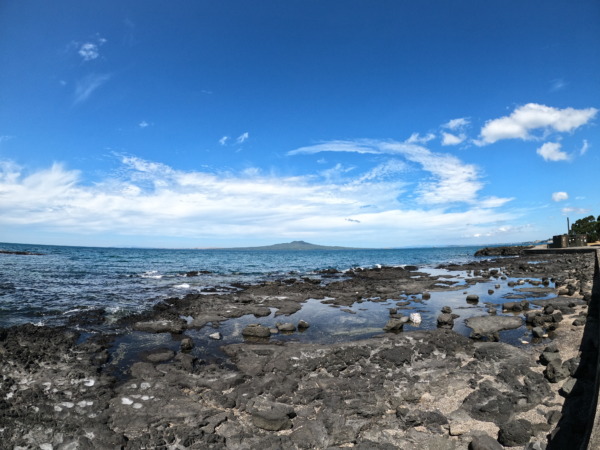A couple months ago, a close friend of mine introduced me to an intriguing Kickstarter project — a game called Faster Than Light (“FTL”). Knowing me, she thought it’d like it for its retro graphics and strategy simulation gameplay, not to mention its sci-fi, outer space setting! I finally bought and started playing it about couple week ago.
Little did I know that I’d still be playing 15-90 minute sessions pretty much every day of this week (unusual because of my schedule). I wanted a good single-player story-driven strategy game with high replay value for a while. FTL was it.
The first thing about FTL gameplay that I noticed was the amount of micromanagement. I hadn’t played a real-time strategy (RTS) game in a while. Despite the relatively long cooldown times of some weapons (11 seconds for the basic laser weapon for the first available ship), I found myself scrambling to put out fires, fend off intruding boarding parties, fix systems — all the while trying to take down the enemy ship. I was also initially unfamiliar with the game’s mechanics (despite the great tutorial). So I died pretty quickly (with scores around 600 and reaching only Sector 3 of 8) in my first five or six games, mostly due to boarding parties either killing off my crew or destroying the oxygen system before my crew could fix it. Perhaps only once did I actually lose by hull breach.
For some reason, only until perhaps my sixth game did I realize that FTL was in fact not real-time. You can pause the game by pressing <space>. This was also highlighted in the tutorial, and in the FTL FAQ’s (which compare this system to Baldur’s Gate, which I vaguely remember from high school). After I discovered this rather obvious facet of the game, the game became immensely easier. (For the record, I think I made this same mistake of not discovering the pause button with both Dragon Age and Mass Effect.)
By around my sixth and seventh games, I also learned a lot more tips and tricks (“strategy and tactics?”) to the game, culminating in my first victory in Game 8 (in Easy mode). Among them:
1. Use pause. This goes without saying. It’s possible to play up Sector 5 without pause (yes, I actually managed to go there once without the pause button). But it becomes increasingly challenging.
2. Time your weapons. In other words, don’t necessarily keep auto-fire on. Laser weapon damage is reduced by enemy shields. On the same token, it also reduces enemy shields. So if you are using two or more laser or beam weapons, time their fire so that the first weapon reduces enemy shields, so that subsequent fire actually damages the enemy.
3. Aim for enemy weapons.In my first several games, I thought that disabling enemy shield systems would be key. But disabling enemy weapons so that they can’t attack you is usually better. In the mid- and endgames, it may also be wise to consider aiming for enemy drone control systems (if the enemy ship is using a lot of drones or a Boarding drone).
Note #1: If using an ion weapon, and the enemy ship’s weapons are disabled, you can also consider asphyxiating the enemy ship by aiming for their oxygen system and med bay. I was able to asphyxiate several enemy ships by doing this with ion or breach weapons (which don’t cause hull damage).
Note #2: Different ships will call for different play styles. For example, when playing the Zoltan ship (the “Adjudicator”), you start with a Halberd beam weapon (2 damage per room, with partial shield piercing) and a Leto missile system (1 damage, complete shield piercing, low cooldown time). This meant that if the enemy had 2 shields, it was often a better strategy to use missiles to take out enemy shields first, followed by the beam weapon (though, if I didn’t have a laser weapon by the time all enemies had 2+ shields, I’d not be happy).
4. Specialize your crew. Pick crew types according to your strategy. I failed to specialize crew for my first several games by thinking that my crew members were interchangeable I realized the folly of my ways after keeping the same person on weapons for a while and started noticing a faster cooldown (or recharge, however you want to call it) time for weapons. I also failed to pick good crew combinations during my first few games. Having a good combination makes the game much easier.
Corollary #1 to this tip is to keep all four stations manned at all times. Corollary to this corollary is that you should have no less than four crew (obviously). And you should take every chance to gain new crew (e.g. from slave ships and, if desired, stores).
Corollary #2 is to avoid using the autopilot subsystem (so you can have a crew member gain piloting experience). Exceptions include (1) if you are playing boarding style, and want to teleport all your crew to the enemy ship (I do not recommend this risky style, unless you know what you’re doing); (2) if you have 2 or less crew (in which case you are kind of screwed already).
Note #1: After getting a lot of trouble with enemy boarding crews, I prioritized getting an Anti-Personnel drone. This drone is pretty good, but it does take up one drone slot, two power, and requires a Drone Control system. Unless the ship already comes with a Drone Control System, I tend to avoid getting drones because of its cost. I’ve now settled with trying to get as many crew as possible, with at least one Mantis crew, or shuffling people in and out of the medbay (unless the enemy is already in the medbay — always good for you).
On a related note, I incidentally got 4 Zoltan crew (70 health, low combat damage) to man all stations, with a 4 Mantis (100 health, high combat damage) for my security and repair team, on one playthrough. This worked out surprisingly well.
Note #2: Even though only one crew member can man a station, I tend to keep all my “extra” crew in the manned station rooms. In other words, I try to keep at least two crew in pilot, shields, weapons and engine. This way, the system will be fixed much quicker, and more importantly, the specialized crew member won’t go down from a surprise boarding party or fire. In other words, “extra” crew members are kind of like bodyguards and extra mechanics, in my gameplay style.
Note #3: I always get a Slug if possible. It’s like a free Sensory System bonus. (I have not tried getting more than 1 Slug at once, so I don’t know if they stack.)
5. Use volleys of attacks. Use combos.
For the most part, I learned to send shots in volleys rather than have everything autofire at will. Unfortunately this also meant that sometimes I had to wait for a longer weapon to charge before firing weapons with shorter charge times. But this is usually worth it. For example, if the ship has two multiple-shot laser weapons, for a total of, say, 6 shots, and the enemy ship has 3 shields and a 30% evasion rate (my guess for ships at that power level), you’ll have a 97% chance of getting at least one shot in [P(getting at least one shot) = 1 - P(miss all 3 shots) = 1 - choose(3,0)*(0.70^0)*(0.30^3) = 1 - 0.027 = 0.973] Obviously, if you choose just one weapon (3 shots) at a time, enemy shields would probably regenerate at least partially by the time the second weapon shoots, and your chances of actually hitting the ship goes to zero.
Volleys of attack also prevent enemy crew from fixing systems before your next shot. For example, if you have a weapon with partial shield piercing (e.g. some beam weapons), the beam weapon would be more effective if you used other weapons to take out enemy shields first. But this would be pointless if the enemy ship could repair its shields before your beam weapon fires.
Corollary #1: For more advanced play, it’d also be a good idea to learn the timings of your weapons, so you can deduce what the best timings would be to maximize the number of shots you make. Continuing the above example, a Glaive beam weapon takes a very long 25 second charge time, but the Tier 1 Leto, Artemis or Hermes missile systems take 14 seconds or less. So it’s possible to get off two missiles at enemy shields before the Glaive weapon fires (and pretty much kills the enemy ship). It may also be possible to match the multiples of weapon timings, so you can switch up your pattern of firing. But I haven’t tried this yet.
The predominant combo that I used in my first victory was essentially suggested by FTL’s default setup for the Engi Torus ship. When setting sail, the ship is equipped with an Ion Blast II, which deals 1 ion every 4 seconds, and an Anti-Ship MK I drone. The idea is that you deal ion damage to the enemy ship’s shields, which allow the Anti-Ship drone to deal hull and systems damage. Later on, I supplemented this with another Ion Blast II and Pegasus missiles. Continuous Ion Blasts could effectively keep enemy shields lowered, and even allow ion damage to enemy systems (e.g. their weapons, oxygen, etc.) Pegasus missiles made the work for the Ion Blast and Anti-Ship drone even easier (and almost too easy) by taking out critical systems (e.g. shields).
Note #1: The best weapon in FTL, in my opinion at this time, is the Ion Blast 2, in combination with, in order, the Halberd Beam, Glaive Beam, Burst Laser 2, or Burst Laser 3. Despite not causing damage and requiring 3 power, its fast cooldown rate at 4 seconds is unbeatable (this is by far the fastest weapon in the game, in fact, with the second fastest being the weaker Ion Blast 1 at 8 seconds). This weapon disables enemy shields, making your attacks much more effective, while also capable of disabling enemy weapons (after all enemy shields are down, and you are aiming for enemy weapons). Though it does 1 system damage, it actually deals 2 ‘damage’ to Zoltan Shields as well.
The tricky part is figuring out the timing of when enemy shields will be down, to maximize your own weapons’ damage, and how long enemy systems you are targeting will stay disabled (before enemy shields come back on). The even more tricky part is figuring out to get this weapon, given that it’s one of the rarest in the game (though equipped by default in the Engi’s Tori ship).
On a related note, getting the Weapons Reloader augmentation as well as manning weapons with a 2-star weapons crew makes the Ion Blast 2 insanely fast compared to the other weapons.
6. Get blast doors. The door subsystem does not consume any additional power, but it does make the doors noticeably stronger. As advertised, this does gives you more time to react to enemy board parties and prevent fires from spreading. With Improved Blast Doors, I was actually able to kill off a few boarding parties simply by asphyxiating them (though I later opted to have dedicated security personnel, who would gain experience from the combat.)
7. Vent rooms when facing multiple fires. The most trouble I’ve ever had with fires were with solar flares and enemies using the Fire Beam (very annoying, but also pretty good when you use it yourself). In case of emergency, I’ve sometimes had to send all my crew members to the four manned rooms and vent out almost every other room.
8. Maximize your time in each sector. Each sector is increasingly difficult. So spend as much time as possible in each sector to keep up (or stay above) the power curve.
This means that you should recognize where you are on the power curve. The rules of thumb I’ve come up with so far use (1) # shields you have, (2) # weapons you can have charged at once, (3) # enemy shields, (4) # enemy weapons, and (5) to a lesser extent, your evasion rate. Depending on the style of play, I often care most about
- Ratio of your weapons to enemy shields (higher is better): You typically want more, or an equal number of, powered weapons than the enemy has shields. This is particularly acute if you have to rely on missile systems, which uses ammo. You can also make a more detailed computation with how many shots you have, and whether your weapons have partial shield piercing.
- Ratio of your shields to enemy weapons (higher is better): You typically want more, or an equal number of, shields than the enemy has weapons. Pretty much the same rationale as before.
- How long it takes you to destroy an enemy ship (lower is better). If you have to jump away from an enemy ship more than once in the same sector, I’ve found that it’s pretty much guaranteed that you are too far under the power curve to keep playing. It’s also sometimes possible to be evenly matched with an enemy ship, especially if the two ratios above are exactly the same. I’ve had some battles go on for a very long time, and could only press an advantage by using too many missiles or by luck (since enemy ships in FTL seem to shoot at random, and not target your critical systems). This usually meant that my chances of reaching Sector 8 (the Last Stand) would be OK, but that my chances of actually winning would be rather low.
- Of course there are many other factors, especially with different weapon combos, that change up these rules. For example, I’ve found that I could still eek out victories with the Ion Blast 2 because its insanely low 4-second cooldown (often reduced by a crew bonus or weapons charge augmentation) could keep enemy shields or weapons essentially at nil, which shifts the two ratios above quite significantly.
9. Be efficient with scrap. Figuring out what to do with scrap is something I still need to think about. Typically I have an idea of what kind of overall strategy to use when picking out a ship (e.g., going laser + missiles, going defense + drones, going boarding crew, etc.), so I have a good idea where to invest scrap. I’ll also usually save scrap until I really need it to stay a little above the power curve (e.g., when to get the next level of shields). Saving scrap is also very useful for preventing disappointment at the store, if I see an item I really want, but am short by 2 scrap or something ridiculous like that.
10. Know when to quit. As I mentioned in “Maximize your sector time,” there may be situations when it’s prudent to jump right away after the FTL engine is charged. For instance, you may be outgunned or may take more hull damage than necessary (as is often the case if you are caught be the rebels before exiting a sector — never a good idea). I’ve also had to jump when the enemy has disabled my shields (e.g., with ion weapons, or a lucky missile or beam shot through my shield systems) while being in an asteriod field.
Finally, if you are wayyyy too behind the power curve, and have to jump from a battle at least twice in the same sector, it might be better to restart the game. I always hope that this happens to me before Sector 3 (so I haven’t invested too much time in the playthrough yet). Sadly, this happens most commonly to me in the mid-game when enemies have gotten 3 shields, and I can’t afford the 3rd shield or better weapons.
There is probably a lot more to add to this list in the future. I’ll also probably add a video of my first Normal win (despite it being very sloppy). It’s clear that Subset Games thought out the game mechanics and balance very thoroughly, and probably played, or simulated, at least thousands of playthroughs, so that players could find perhaps hundreds of ways to play.
(On another note, FTL is not Starcraft, so perhaps it may be possible to design an algorithm to beat FTL’s built-in AI, perhaps even a relatively simple algorithm using rule-based play based on the tips like the above. This would be an interesting project.)



